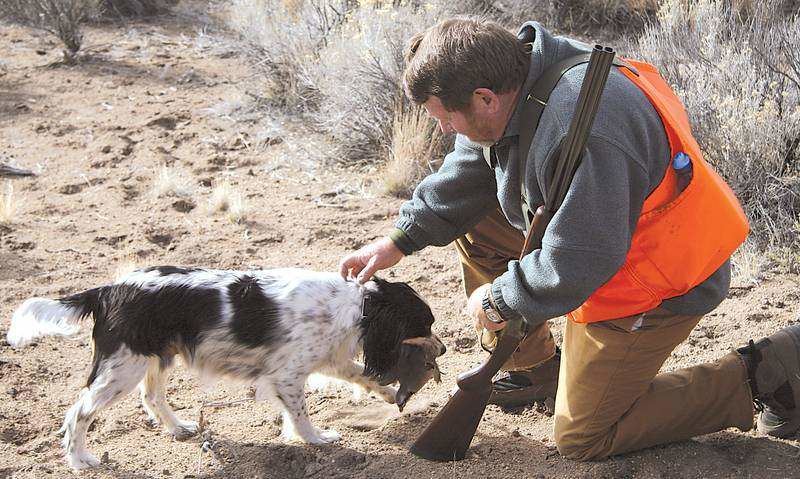On top of his game
Published 4:00 am Wednesday, November 28, 2007

- It’s apparent that Howdy’s main goals in life are to hunt and please his human, John Witty, not necessarily in that order.
Bon appetit.
I ate chukar for the first time Sunday evening and it was delectable. Yes, it tasted a lot like chicken, but then, there’s a reason that particular fowl is so popular.
I marinated the chukar (an Asian native successfully introduced in the West) in a red wine/garlic mixture, braised it with sliced onions and baked it with a cornmeal stuffing. I suppose those seasonings might have made even my leather hiking boots taste better than average, but these tender little game birds (somewhere between a quail and a pheasant in size) were way better than boot. They were delicious.
Thank you, Howdy.
During the Thanksgiving holiday four years ago, I ambled over hill and dale with my brother, John, and his 6-month-old, wet-behind-the-ears springer spaniel. At that stage of his development, Howdy reminded me of “a gawky middle schooler, full of adrenaline and promise and field-bred joie de vivre.”
That day, we experienced the Crooked River Grassland near Grizzly Mountain through the nose of an exuberant, half-grown pup.
Last weekend, we experienced the High Desert southeast of Brothers through the nose of a mature hunting dog, well tuned to the nuances of the field. Now 412 years old, Howdy is still every bit as gleeful to be out, as fueled by instinct-driven energy as he was as a pup. No doubt, that wag that starts at his nose, ripples down through his torso and finishes with a staccato wave of his little tail, is a full body smile.
What’s changed is his focus. Training has taught Howdy to discriminate between a songbird and a chukar, a jackrabbit and a pheasant.
It’s quite amazing, really.
He works the sagebrush and rabbitbrush steppe out ahead like a four-legged windshield wiper ardently looking for birds holding in the cover. But a big difference now is that he’s under control; one well-placed whistle and he’s back within the range of a 20-gauge shotgun.
It occurs to me that this symbiotic relationship between human and dog is the basis for the everyman’s bond with his canine friend. Avid hunter or toy companion, the dog part of the equation aims to please. With a modicum of focused training, it balances out quite nicely.
It helps if you can meet part way.
As author Edward Hoagland said, “In order to really enjoy a dog, one doesn’t merely try to train him to be semi-human. The point of it is to open oneself to the possibility of becoming partly a dog.”
No offense John (or perhaps, no offense Howdy).
Anyway, Howdy’s grown up and reordered his priorities. Kind of like we do.
“When he was a pup, he had unbridled enthusiasm about everything, and his passion to hunt reigned supreme,” my brother remembered. “As an adult, his desire to behave and please me now comes in first.”
That “he’s a well-mannered, gentle, devoted companion every minute of every day” is a bonus. Or vice versa.
Over the course of the day, John, Mark Quon, guide Lonnie Wallace and I covered what seemed like every square inch of Don and Linda Wallace’s 640-acre Juniper Rim Ranch near Frederick Butte. If we walked five or six miles, Howdy ran 20 or 30. Chukar, especially, are known for their terrestrial mobility.
We ended up with several quail and chukar, provided by the Wallaces and highly appreciated first by Howdy, and then by those fortunate enough to savor a plateful.
By day’s end, Howdy was tuckered, but in no way chukared out. No doubt, he’d have kept on going into the night.
By day’s end, having watched Howdy dexterously flush the birds and then retrieve them when his handler’s aim was true, I was pretty certain Howdy was semi-human. And we had all become a little more dog.
If you go
Destination: Don and Linda Wallace offer upland bird hunting packages at their remote Juniper Rim Ranch off Frederick Road east of Brothers. Costs vary. Guests should bring their own water. Food is available from Brothers Stage Stop. The ranch is not a game preserve; hunters must abide by seasons and bag limits.
Contact: 419-3923.






